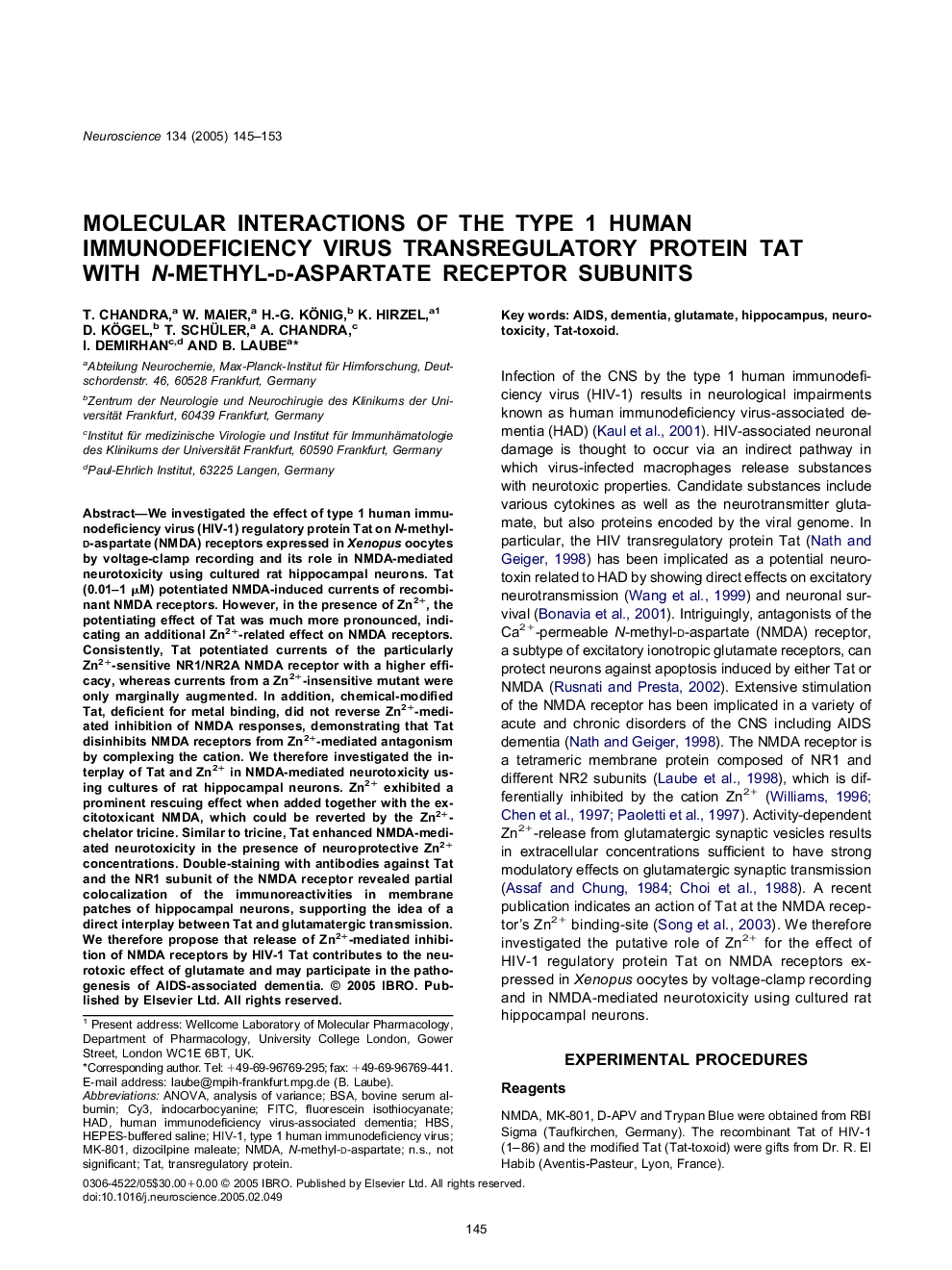| Article ID | Journal | Published Year | Pages | File Type |
|---|---|---|---|---|
| 9425537 | Neuroscience | 2005 | 9 Pages |
Abstract
We investigated the effect of type 1 human immunodeficiency virus (HIV-1) regulatory protein Tat on N-methyl-d-aspartate (NMDA) receptors expressed in Xenopus oocytes by voltage-clamp recording and its role in NMDA-mediated neurotoxicity using cultured rat hippocampal neurons. Tat (0.01-1μM) potentiated NMDA-induced currents of recombinant NMDA receptors. However, in the presence of Zn2+, the potentiating effect of Tat was much more pronounced, indicating an additional Zn2+-related effect on NMDA receptors. Consistently, Tat potentiated currents of the particularly Zn2+-sensitive NR1/NR2A NMDA receptor with a higher efficacy, whereas currents from a Zn2+-insensitive mutant were only marginally augmented. In addition, chemical-modified Tat, deficient for metal binding, did not reverse Zn2+-mediated inhibition of NMDA responses, demonstrating that Tat disinhibits NMDA receptors from Zn2+-mediated antagonism by complexing the cation. We therefore investigated the interplay of Tat and Zn2+ in NMDA-mediated neurotoxicity using cultures of rat hippocampal neurons. Zn2+ exhibited a prominent rescuing effect when added together with the excitotoxicant NMDA, which could be reverted by the Zn2+-chelator tricine. Similar to tricine, Tat enhanced NMDA-mediated neurotoxicity in the presence of neuroprotective Zn2+ concentrations. Double-staining with antibodies against Tat and the NR1 subunit of the NMDA receptor revealed partial colocalization of the immunoreactivities in membrane patches of hippocampal neurons, supporting the idea of a direct interplay between Tat and glutamatergic transmission. We therefore propose that release of Zn2+-mediated inhibition of NMDA receptors by HIV-1 Tat contributes to the neurotoxic effect of glutamate and may participate in the pathogenesis of AIDS-associated dementia.
Keywords
Related Topics
Life Sciences
Neuroscience
Neuroscience (General)
Authors
T. Chandra, W. Maier, H.-G. König, K. Hirzel, D. Kögel, T. Schüler, A. Chandra, I. Demirhan, B. Laube,
